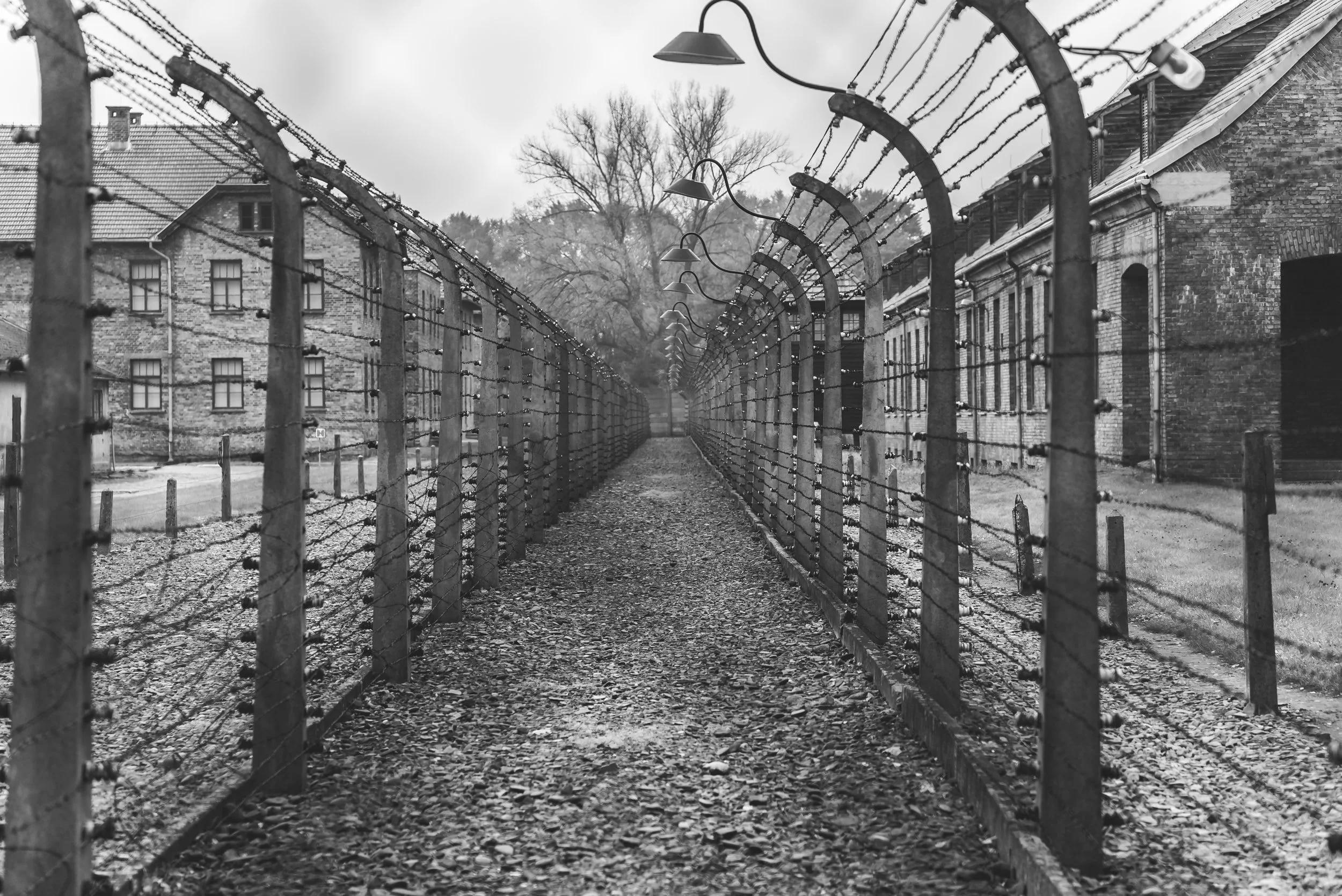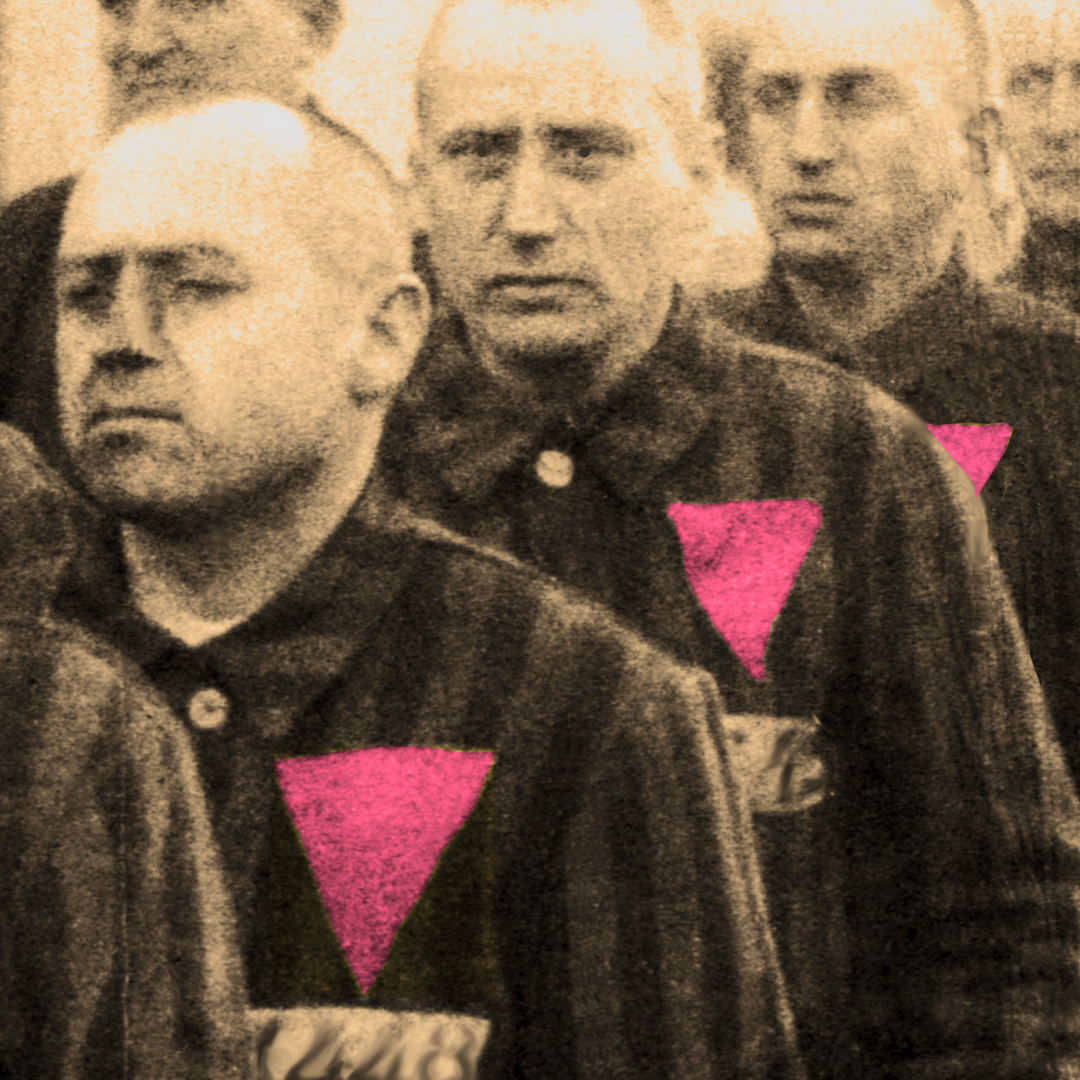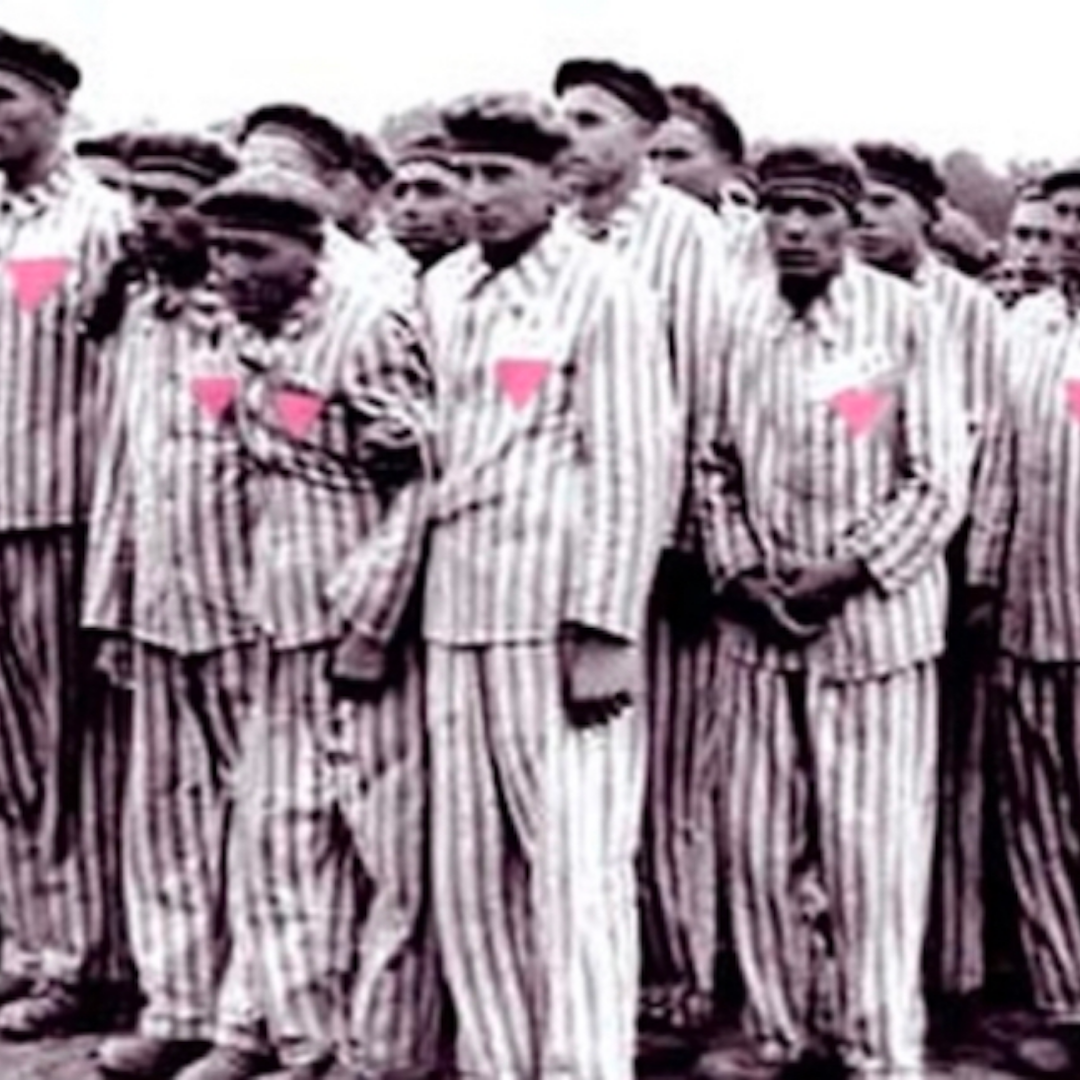The Pink Triangle.
The Holocaust is by far one of the worst instances of race superiority, ethnic cleansing, and genocide in the last 100 years. In addition to the 6 million Jews targeted and killed, the Nazis also targeted the then-occupied residents of Poland, Romani people*, Soviet prisoners of war (POW), Jehovah’s Witnesses, Czechs, Byelorussians (Belarusians), French, Russians, Yugoslavians, Ukranians, even Germans and other nationalities, as well as homosexuals, sex workers and other social “undesireables”. The Nazis had a badge coding system in order to signify what group(s) an individual was a part of; an example would be a yellow triangle under a red triangle signifying a Jewish political prisoner.
The now well-known symbol of pride pink triangle was used to mark homosexual men -or those identified as such, like bisexual men and transgender women- as well as sex offenders, pedophiles, and zoophiles. The black triangle was used to mark “asocial” and work-shy individuals: Romani people, mentally ill or disabled individuals, alcoholics, drug addicts, beggars, draft resisters, prostitutes, and lesbians. Homosexuality, or “unnatural indecency/intercourse-like act”, was made illegal in Germany in 1871 but was not enforced until the Nazis took power in 1933.
According to Time and historian Robert Beachy, the law actually encouraged scientific study of sexual preferences and pushed for more scientific understanding of human sexuality. Once the Nazis began to enforce the law, gay bars were shut down, books on sexuality were burned, and Ernst Röhm was murdered for trying to overthrow Hitler and his homosexuality. Survivor Pierre Seel states that in the camps “there was no solidarity for the homosexual prisoners; they belonged to the lowest caste.” After the war ended, when camps were liberated, East and West Germany enforced the homosexuality ban, with many remaining incarcerated until the 1970s and the law not being officially repealed until 1994.
Even as the Allied powers began to remove Nazi policies and their impact, the law on homosexuality was left alone. However, as gay and lesbian liberation movements began to grow in the West, the oppressive history of gays and lesbians during the war began to come to light.
TIME Magazine made the first reference to the pink triangle as a pride symbol in June 1977, when talking about a protest in Miami-Dade County on the repeal of local anti-discrimination protections in housing, employment, and public accomodations. The writer of the TIME article spoke of protesters on both sides, sharing the lengths conservative, religious repeal supporters would go to; Anita Bryant stressed how “homosexuality…was against God’s law.”
The gay protesters against the repeal were said by the writer to “also overdramatize their case,” sharing how they wore pink triangles “reminiscent of the yellow star that Jews were forced to wear in Hitler’s Germany. This tactic backfired badly.” In an updated 2018 article on the history of the triangle, TIME shared a note from a reader of the 1977 article, saying how the triangle was not reminiscent, but analogous, “as both the star and the triangle were real artifacts of that time,” with the reader adding “Gay people wear the pink triangle today as a reminder of the past and a pledge that history will not repeat itself.”
As the AIDS epidemic ramped up in the 80s, activists from AIDS Coalition to Unleash Power (ACT-UP) used the pink triangle as their symbol to raise awareness of the public health crisis. Avram Finklestein designed the triangle, which was upright instead of upside down, after William F. Buckley wrote in a 1986 New York Times op-ed that HIV/AIDS patients should get tattooed to warn partners. The triangle was made a more vibrant fuschia rather than pale pink, along with the “Silence=Death” motto.
The pink triangle came back into the spotlight in 2017 due to reports of gay men being prosecuted in Chechnya, with protesters scattering pink triangles reading “stop the death camps” outside of the Russian Embassy in London in April 2017. The pink triangle can still be seen in pride parades, on social media, and businesses. May we remember those who came before us and paved the way for where we are today.
*The term “Romani” is used to describe an ethnic group originating from the Rajasthan, Haryana, and Punjab regions of modern-day India. They are known as nomadic travelers. The only accepted terms to refer to the Romani people, as decided by the World Romani Congress in 1971, are Romani or Roma. The term “g*psy” is not used by the Romani people due to its history as an ethnic slur and connotations of othering and illegality.
Additional Links / References:
History of the pink triangle:
https://www.history.com/news/pink-triangle-nazi-concentration-camps
https://time.com/5295476/gay-pride-pink-triangle-history/
https://www.nationalww2museum.org/war/articles/the-men-with-the-pink-triangle-heinz-heger
https://encyclopedia.ushmm.org/content/en/article/lesbians-under-the-nazi-regime



